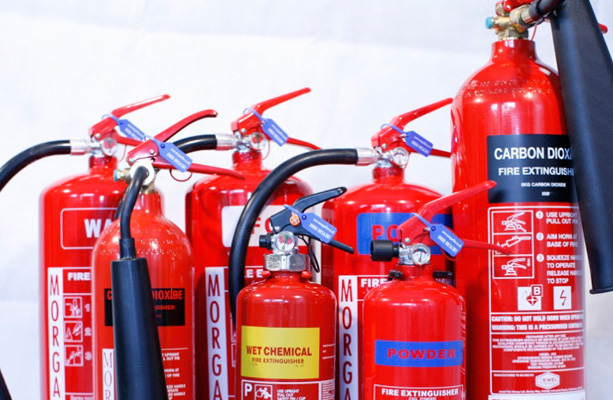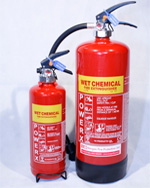
Understanding Fire Extinguisher Types: Choosing the Right Protection for Your Business
Selecting the appropriate fire extinguisher is crucial for effective fire safety. Different fire classes require specific extinguishing agents to ensure safety and compliance. Below is an overview of common fire extinguisher types and their suitable applications.
Common Types of Fire Extinguishers

1. Water Fire Extinguishers
Best For:
Class A fires involving organic solid materials such as wood, cloth, paper, plastics, and coal.
How to Use:
Direct the jet at the base of the flames and sweep across the area of the fire.
Colour Code:
Signal Red
Caution:
Do not use on burning fat or oil or on electrical appliances.

2. Foam Fire Extinguishers
Best For:
Class A and B fires, including flammable liquids like petrol, diesel, and solvents. Fluorine free foam extinguishers are available in line with changes to legislation.
How to Use:
Apply the foam to cover the surface of the burning material, sealing in vapours and cooling the fire.
Colour Code:
Cream
Caution:
Not suitable for use on cooking oil fires or electrical fires.

3. Dry Powder Fire Extinguishers
Best For:
Class A, B, and C fires, including flammable gases like butane and propane, and electrical fires.
How to Use:
Aim at the base of the flames and use a sweeping motion.
Colour Code:
Blue
Caution:
Not recommended for use in enclosed spaces due to the risk of inhalation and reduced visibility.

4. Carbon Dioxide (CO₂) Fire Extinguishers
Best For:
Class B fires and fires involving electrical equipment.
How to Use:
Direct the horn at the base of the fire and discharge.
Colour Code:
Black
Caution:
Do not hold the horn during use to prevent frostbite.

5. Wet Chemical Fire Extinguishers
Best For:
Class F fires involving cooking oils and fats.
How to Use:
Apply the fine mist to cool the flames and prevent splashing.
Colour Code:
Yellow
Caution:
Primarily designed for kitchen environments; not suitable for other fire classes.
Fire Classes and Corresponding Extinguishers
Understanding fire classes helps in selecting the appropriate extinguisher:
Colour Coding of Fire Extinguishers
Fire extinguishers are colour-coded for easy identification:
- Water: Signal Red
- Foam: Cream
- Dry Powder: Blue
- CO₂: Black
- Wet Chemical: Yellow

Choosing the Right Extinguisher
Selecting the correct extinguisher depends on the specific risks present in your environment. It’s essential to assess potential fire hazards and ensure appropriate extinguishers are accessible.
Contact Us for a Free Consultation
Morgan Fire: Providing expert guidance and top-quality fire extinguishers to protect your business.


